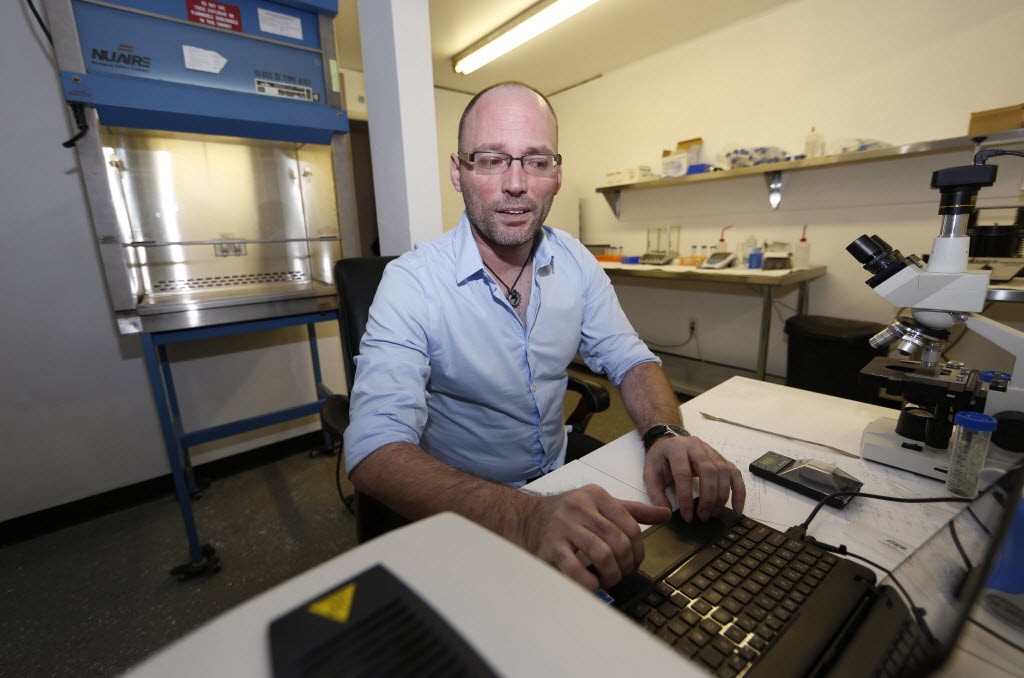Marijuana industry wrestles with pesticides, safety

DENVER — Microscopic bugs and mildew can destroy a marijuana operation faster than any police raid. And because the crop has been illegal for so long, neither growers nor scientists have any reliable research to help fight the infestations.
As legal marijuana moves from basements and backwoods to warehouses and commercial fields, the mold and spider mites that once ruined only a few plants at a time can now quickly create a multimillion-dollar crisis for growers. Some are turning to industrial-strength chemicals, raising concerns about safety.
Pesticides and herbicides are regulated by the federal government, which still regards almost all marijuana as an illicit crop, so there’s no road map to help pot farmers. Chemists and horticulturalists can’t offer much assistance either. They sometimes disagree about how to combat the problem, largely because the plant is used in many different ways — smoked, eaten and sometimes rubbed on the skin.
“We have an industry that’s been illegal for so many years that there’s no research. There’s no guidelines. There’s nothing,” said Frank Conrad, lab director for Colorado Green Lab, a pot-testing lab in Denver.
In states that regulate marijuana, officials are just starting to draft rules governing safe levels of chemicals. So far, there have been no reports of any human illness traced to chemicals used on marijuana, but worries persist.
The city of Denver this spring quarantined tens of thousands of marijuana plants at 11 growing facilities after health inspectors suspected use of unauthorized pesticides. Some of the plants were later released after tests revealed the pot was safe, but two producers voluntarily destroyed their plants. Eight businesses have still at least some plants in quarantine.
In Oregon, a June investigation by The Oregonian newspaper found pesticides in excess of legal limits on products ranging from marijuana buds to concentrated marijuana oils. Other pesticides detected on the marijuana are not regulated by Oregon’s marijuana rules, meaning that products containing those chemicals still can be sold there.
The U.S. Environmental Protection Agency, which decides which pesticides can be used on which crops, just last month told Colorado and Washington authorities that they could apply to have some cannabis-related chemicals approved through what’s called a “special local need registration.” But that process could take years.

Colorado and Oregon require retail marijuana to undergo testing for pesticides and other contaminants. But as the Oregon investigation showed, the testing regimes are imperfect. And Colorado hasn’t yet implemented requirements for retail pot to undergo pesticide testing because of regulatory delays.
Washington state is still working on its pesticide rules. The nation’s largest marijuana producer, California, has no regulations at all for growing commercial pot.
“It’s a lot more difficult than it sounds, and it’s expensive,” Washington Liquor Control Board spokesman Brian Smith said about testing for pesticides.
As a result, unscrupulous pot growers can use banned chemicals with little chance of being caught.
“We were taken by surprise, this whole pesticide issue,” said Ashley Kilroy, Denver’s director of marijuana policy. She was talking to a room of about 200 pot-industry workers invited earlier this month to learn about pesticide quarantines and rules.
What the growers heard wasn’t encouraging.
“There is no federal agency that will recognize this as a legitimate crop,” said Whitney Cranshaw, a Colorado State University entomologist and pesticide expert. “Regulators just bury their heads, and as a result, pest-management information regarding this crop devolves to Internet chats and hearsay.”
Several pot growers agreed that research is needed on pesticides for pot. But they pointed out that pesticides are widely used on food crops, and that weed consumers have never before had as much information about the marijuana they buy.
“It’s just like broccoli or spinach or peaches or anything. The plant is susceptible to certain pests,” said Gabriel Fairorth, cultivation manager for Denver’s Herbal Remedies.
